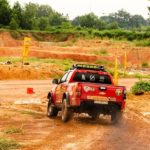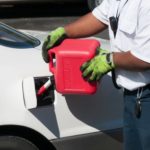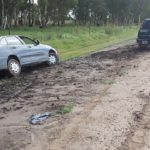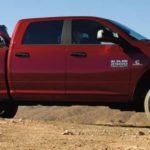Poor Driving Conditions

POOR DRIVING CONDITIONS
You can plan your road trip anyway you want but in reality at the end of the day weather and traffic are unpredictable so you better change your plans accordingly. Being a game player is crucial when it comes to driving challenges so you better adapt to the situation or pull over until the coast is clear and your mi d too!
Low light
One of the most common hazardous conditions is driving at night. We usually don’t think of darkness as a hazardous driving condition, but statistics have shown that over half of all traffic collisions happen during times of darkness, even though fewer miles are driven. Due to the limited visibility darkness causes, it is imperative to drive with a heightened level of concentration and awareness regarding your surroundings. Proper use of your lighting equipment will also decrease your chances of a collision.
If you drive too quickly at night, your headlights will not light up the road far enough ahead. You will not have enough time to react to the problems that your headlights would normally illuminate. You want to be able to avoid a collision that is within the range of your lights.
On very dark highways or streets, use your high-beams to see farther ahead. Just remember to shut them off when you can see the headlights or taillights of other cars on the road ahead of you.
Bright sunlight or reflection
Driving in bright sunlight can be a real hazard, especially if you have a dirty windshield. Cleaning your windshield (both inside and out) should be done at least once a week. A dirty windshield is not only hard to see out of in normal light, but in direct sunlight or with headlights coming towards you, the dirt makes the windshield opaque (meaning that you can’t see through it at all).
Even with a clean windshield, you are still going to experience glare from the sun. Intense glare usually occurs in the early morning or late afternoon when the sun is low on the horizon. Just as when driving at night, leave yourself ample space between yourself and other vehicles and increase your alertness towards your surroundings. Remember that if you’re having problems seeing, so are the other drivers and pedestrians around you.
Heavy rain (wet roads)
Rain not only causes you to have a problem with visibility, it also will affect your ability to control your car. Under normal driving conditions (i.e., a dry road), your tires’ traction capabilities usually exceed the actual demands needed by the driver. On a wet road, drivers’ expectations of traction and control are usually not met by their vehicles equipment.
It takes the average car twice as long to stop on a wet road as on a dry road!
You should be extremely careful after the first rain of the season (or the first rain in a long time), since this poses even more of a danger because all of the accumulated oil on the road will be loosened and mixed with the water, making it even slicker than a “normal” wet road.
Fog
If you must drive in the fog, drive at a speed which allows you to react to the things that you can see with your limited visibility. Reduce your speed, but keep moving when entering a fog bank, and watch for slow-moving vehicles ahead. Check your rearview mirrors for vehicles approaching from the rear. There are times when the safe speed might be 15 mph on the freeway because of limited visibility. If the conditions are so extreme that you have to pull off the freeway, then do so.
Snow
When it is snowing, the flakes in the air can greatly reduce your ability to see. If it is snowing heavily enough, it can cause a “white out,” which is like driving in a very dense fog. Treat it as such. Again, here you need to slow down, use low beams, and also chains if allowed. If you regularly drive in the snow, you should consider getting snow tires for the winter.
Ice
Icy roads are even slicker than wet roads, thus traction is poorest at or about freezing. Use chains (where allowed) or snow tires, and drive at a slow speed. Give yourself four times the normal amount of following distance when you are driving on the ice. When a thin layer of translucent ice forms on a roadway, it is called “black ice,” and it is extremely slick– so look out for the dark ice. On a day with clear skies, ice on the road is very reflective, and can temporarily blind the driver, so be mindful of this condition as well. On cold, wet days, shade from trees or buildings can hide spots of ice. These areas freeze first and dry out last. Bridges and overpasses can also hide spots of ice. They tend to freeze before the rest of the road does.
Hope this tips help you ease your mind when facing inevitable road adversities but most importantly is to keep a positive mindset and remember to stay safe!
Popular Posts
Every vehicle needs to be refueled from time…
February 08, 2019
When people say that knowledge is power, they…
December 17, 2018







